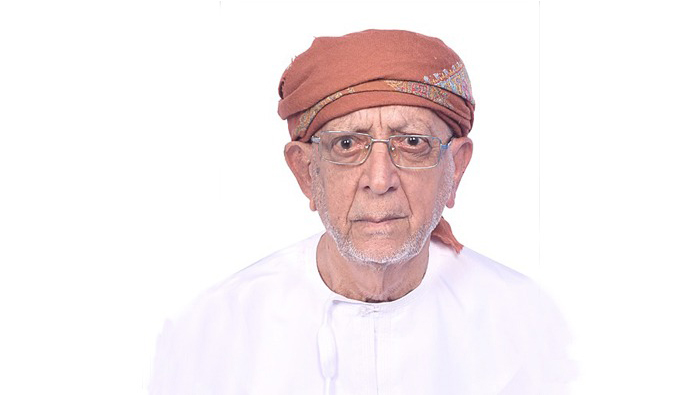
On the occasion of the 281st anniversary of the founding of the Al Busaid dynasty, established by Imam Ahmed bin Said in 1744, I proudly and joyfully dedicate this article to His Majesty Sultan Haitham bin Tarik, Sultan of Oman, to the noble people of Oman, and to all our dear readers.
The dawn before the Renaissance
For much of its long history, Oman lived in isolation and stagnation. Plagued by backwardness, illiteracy, a high mortality rate, and isolation from the world, it was among the least known countries on the globe. This reality was captured by the observations of those few who visited Muscat, in an article about the topography and natural conditions prevailing in the 1960s. One Shell-seconded employee described the inhabitants of Muscat and Oman with a phrase as harsh as the environment itself, underscoring the severe lack of development.
The late His Majesty Sultan Qaboos bin Said bin Taimour, in his own accounts, described the lives of Omanis and the environmental conditions, he observed a complete lack of electricity, running water, schools, paved roads, airports, and seaports. These harsh and similar conditions prevailed for a long period until the seismic shift of 23rd July 1970, when His Majesty Sultan Qaboos bin Said, may God have mercy on him, assumed power.
The architect of the modern state
Undoubtedly, the late His Majesty Sultan Qaboos bin Said bin Taimour, who passed away on 10th January 2020, is one of the few transformative leaders of the 20th century whose memory will be forever etched in the minds of Omanis and all of humanity.
He made the dreams of the Omani people a reality. On 23rd July 1970, the late His Majesty Sultan Qaboos bin Said bin Taimour awakened the slumbering Sultanate, leading it through his visionary personal efforts to become the “paradise of the Gulf” in a rapid, peaceful, and universally admired transformation.
His reign heralded the Omani Renaissance, renewing the nation’s rich history and opening a bright new chapter of development, prosperity, and socio-economic progress. The initial decades saw the foundational structures of the modern state put in place:
*1970s: Establishment of key ministries, followed by key councils like the National Defence Council, the Central Bank (1972), and the Oman Chamber of Commerce and Industry (1973). The five-year development plan was drafted in 1975.
*1980s & 1990s: Institution of public participation through the Consultative Council (1981) and later the Majlis Al-Shura (Consultative Assembly) in 1991.
*Governance: The landmark Basic Law of the State, issued in 1996, established a clear legal framework regulating and separating the functions of various authorities, defining the system of government and public rights. Subsequent decrees established the “Supreme Judicial Council” and the “Supreme Court” (1999), reinforcing the rule of law.
The new era: His Majesty Sultan Haitham bin Tarik and the acceleration of Oman Vision 2040
The legacy of the Renaissance continues, but it has entered a dynamic phase of acceleration and institutional maturity under the leadership of His Majesty Sultan Haitham bin Tarik, the fifteenth Sultan of the Al Busaid dynasty. Assuming power in a remarkably smooth transition on 11th January 2020, Sultan Haitham immediately affirmed his commitment to the core principles established by his predecessor: foremost among them, Oman’s foreign policy of neutrality, peaceful, coexistence, and regional mediation.
However, the new era is defined by decisive structural and economic reforms aimed at securing Oman’s future beyond oil, championed through the national blueprint, Oman Vision 2040.
Economic diversification and fiscal resilience
Having previously headed the main committee overseeing Oman Vision 2040, His Majesty the Sultan has accelerated the implementation with a focus and institutional efficiency and financial sustainability.
Key initiatives include:
*Fiscal stability: Implementing a medium-term fiscal plan to address public debt, rationalise spending, and diversify revenues, including the introduction of a Value Added Tax (VAT). These efforts, combined with prudent financial management, have helped stabilise public finances and improve Oman’s credit rating.
*The future economy: The vision targets a knowledge-based, diversified economy, emphasising on-oil sectors like logistics, manufacturing, tourism, and especially Green Hydrogen and Renewable Energy. The establishment of the multi-dollar Oman Future Fund is dedicated to financing promising projects in these future economic sectors.
*Empowerment of youth and private sector: Directives have focused on creating tens of thousands of jobs and supporting entrepreneurs and SME’s, recognising the Oman youth as the core driver of economic change.
Institutional governance and decentralisation
To align the state with the objectives of Oman Vision 2040, His Majesty the Sultan has executed a comprehensive programme of administrative and legislative modernisation.
* New Basic Law: In January 2021, a new Basic Law of the State was issued. This landmark constitutional-equivalent document formalised the mechanism for the smooth transfer of power, notably establishing the role of the Crown Prince (his eldest son, His Highness Sayyid Theyazin bin Haitham). It also further reinforced the rule of law, guaranteed citizens’ rights and freedoms, and enhanced institutional oversight and accountability.
* Government restructuring: His Majesty the Sultan issued Royal decrees to streamline bureaucracy, disbanding several councils and merging over 10 ministries to improve efficiency and reduce expenditure, ensuring a lean and accountable government structure.
*Decentralisation: New laws, such as the Governorates System Law and the Municipal Councils Law, were introduced to empower local communities. This strategic decentralisation aims to achieve balanced regional development by enabling governorates to manage their own resources and actively participate in national planning.
By prioritising efficiency, transparency, and diversification, His Majesty the Sultan is not only preserving the Renaissance legacy-based nation ready to complete on the global stage, ensuring a prosperous future for all Omanis. The vision is clear: to transform Oman into a developed nation with a sustainable economy and an enhanced quality of life by 2040. The journey of renewal is well underway.
Long Live Oman
May God protect His Majesty Sultan Haitham bin Tarik and grant him success in leading Oman toward greater heights. Happy National Day.
*The writer is a retired training manager at Petroleum Development Oman